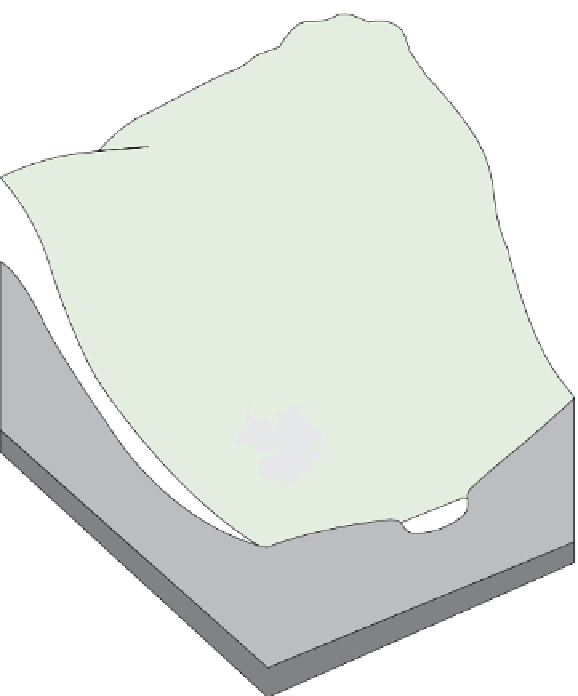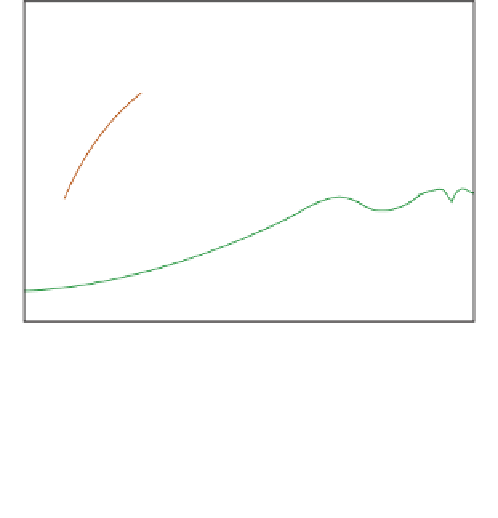Geoscience Reference
In-Depth Information
Net landward transfer
+39 (7%)
Catchment and water cascade
+110 (21%)
-71 (14%)
The catchment or
drainage basin
converts water, snow
and ice input (precipitation +
in
fluent ground water) to
output as river flow, evapotranspiration and
ef
fluent
groundwater flow. Catchment climate and landsystems
(soils, geology, slopes, ecosystems, and human structures
and activities) determine the volume, routing and
time scale of these transfers. This terrestrial hydrological
system is the vital link in the global cycle between its
principal atmospheric and ocean components. It processes
water evaporated from oceanic and terrestrial sources
in the ratio of approximately one to two. We cannot
overestimate the importance of net landward advection
of evaporated ocean water to the continents, for its
equivalent return to the oceans drives Earth's river flow.
From the moment precipitation arrives in the system,
water may be transmitted through a series of in-line stores
or exit any one of them directly or indirectly to a channel
+406 (79%)
-445 (86%)
-39 (8%)
Global annual transfer 516
w
10
3
km
3
Figure 14.2
Global hydrological cycle, showing sources of
the annual total of 516,000 km
3
of evaporated water and its
distribution and eventual return to the oceans. Glacial growth
Source: Data based in part on L'vovich (1979)
compared with 10
4
yr via continental ice sheets. Rivers are
the principal route for water, sediment and energy
transfers from the continents.
Overland flow
Watershed
Capillary
flow
Infiltration
Stream flow
Groundwater
effluence
Depression
storage
Aeration
zone
Urban water
supply
Urban
effluent
Throughflow
Seepage
to
channel
Flood
storage
Groundwater
influence
Water
table
Groundwater
recharge
AQUIFER
Streamflow
Figure 14.3
The catchment landscape.
AQUICLUDE



































































































































































































































































































































